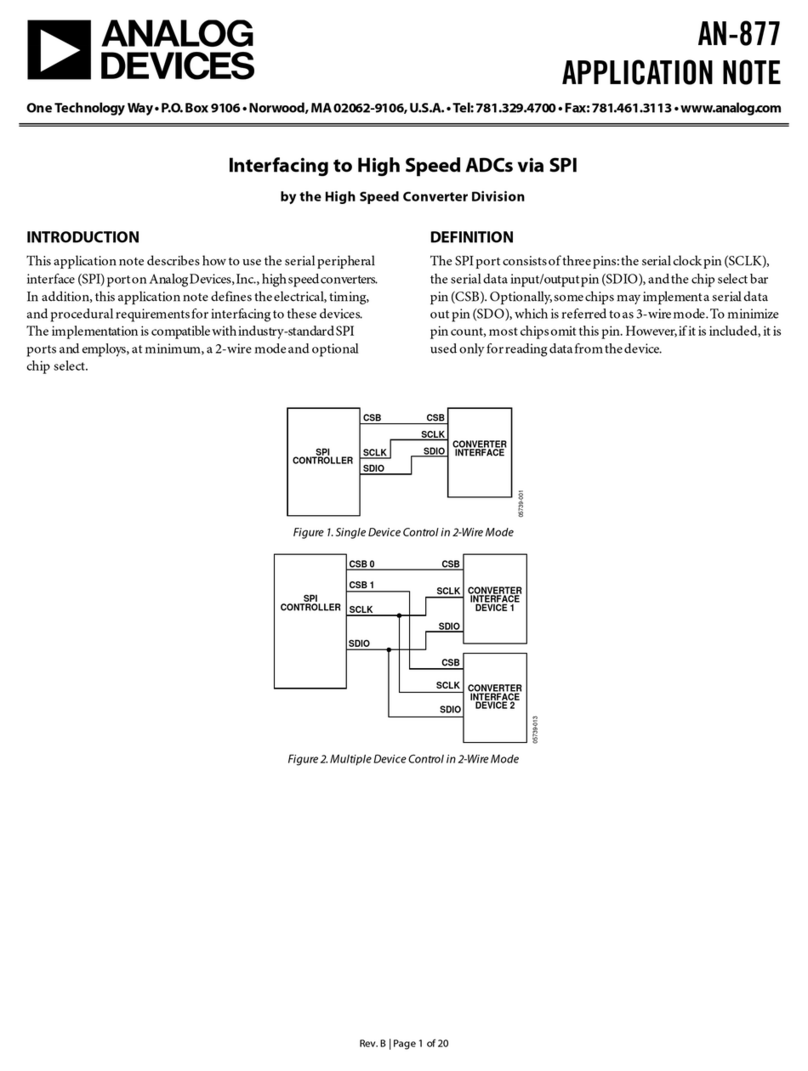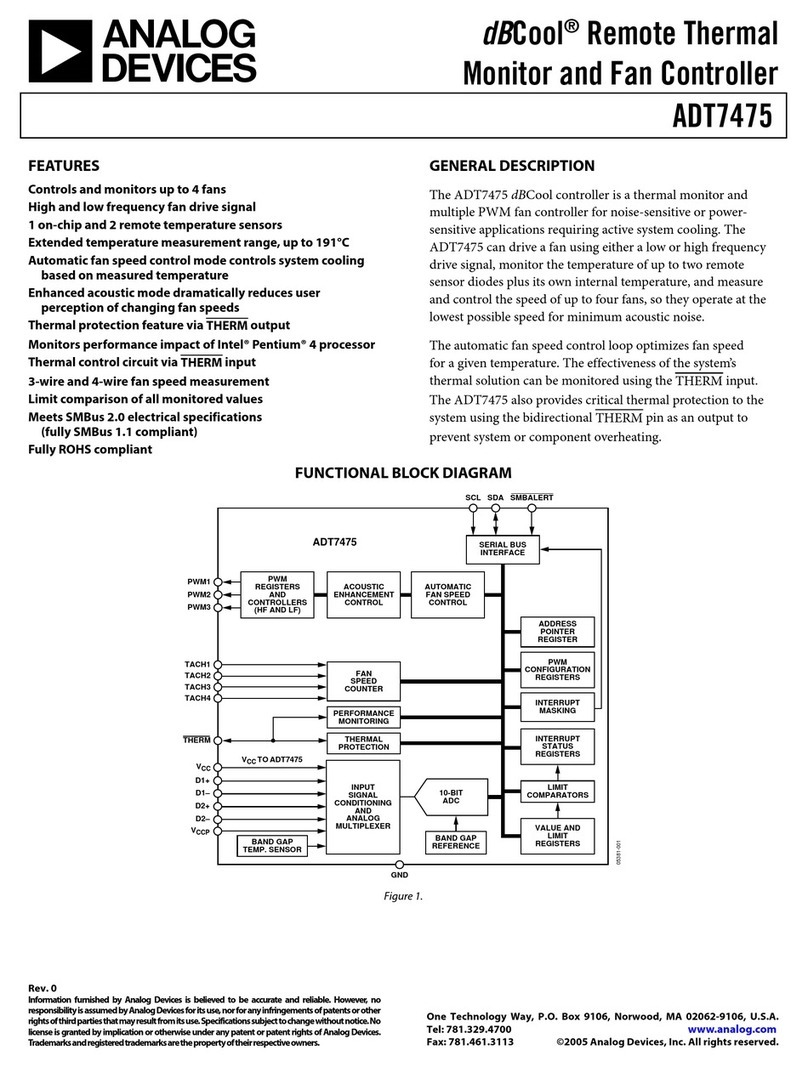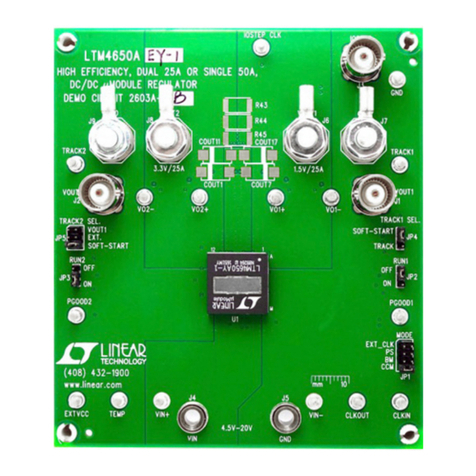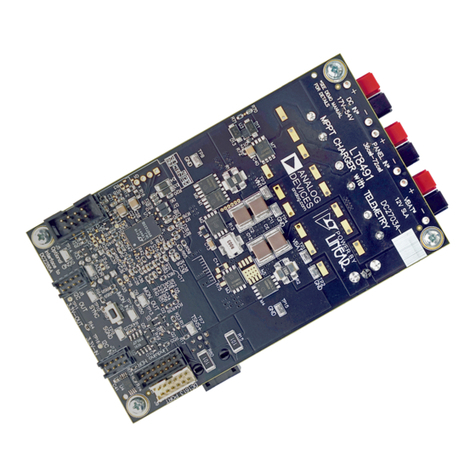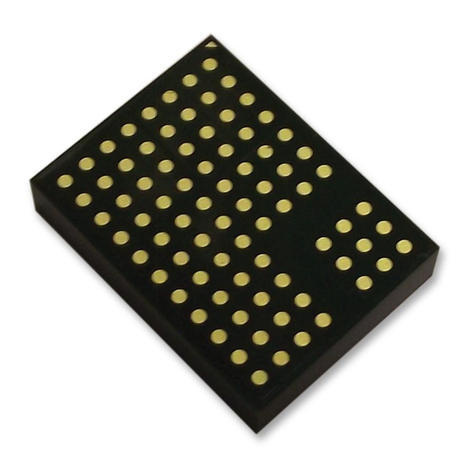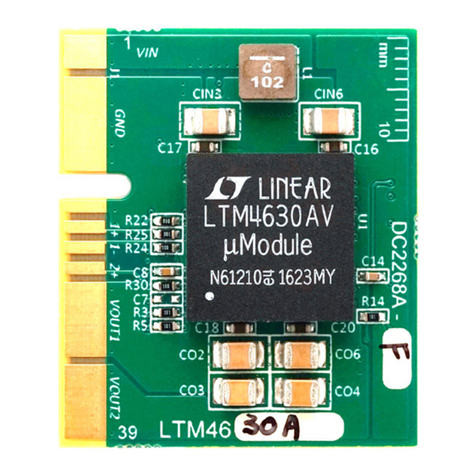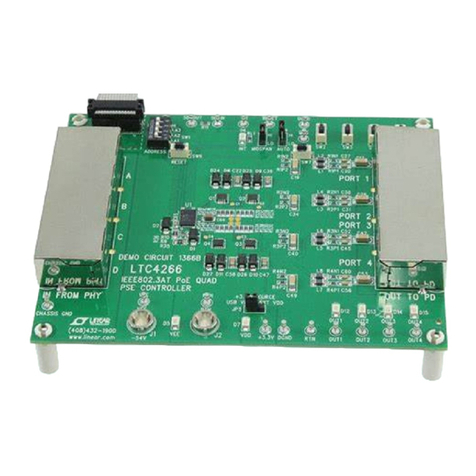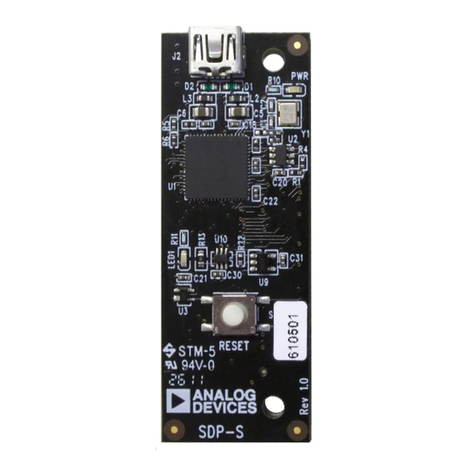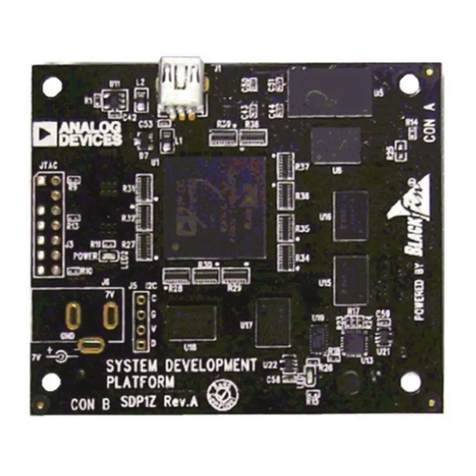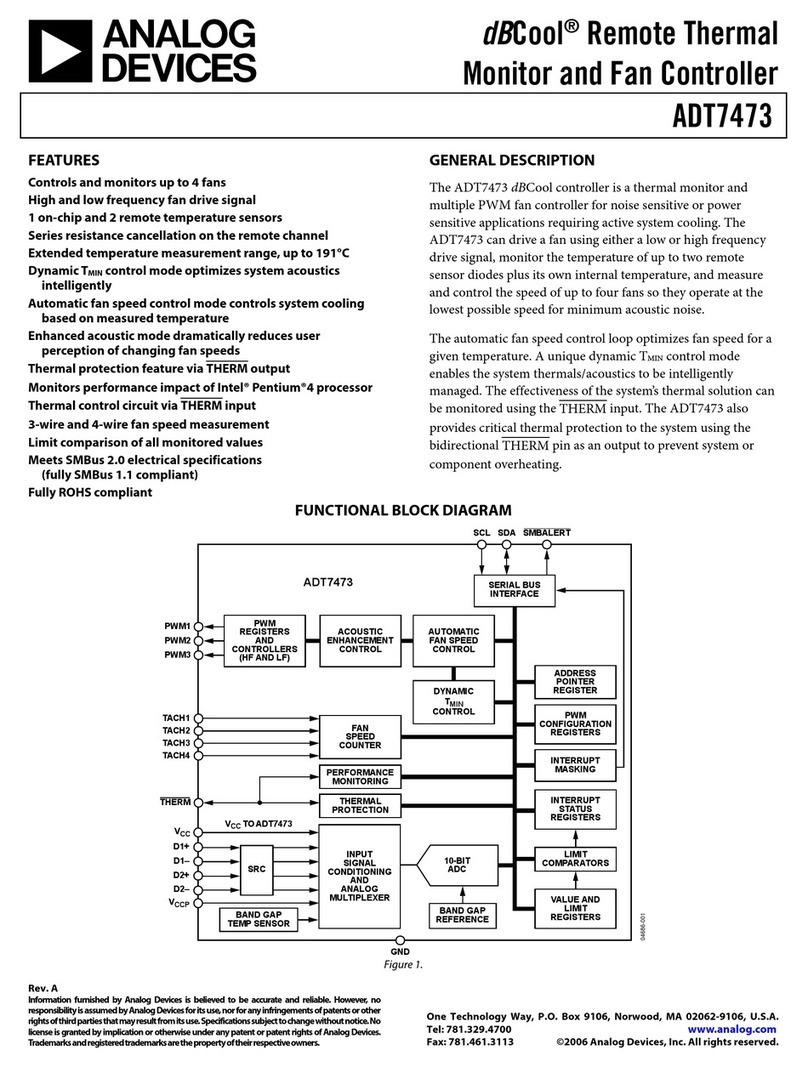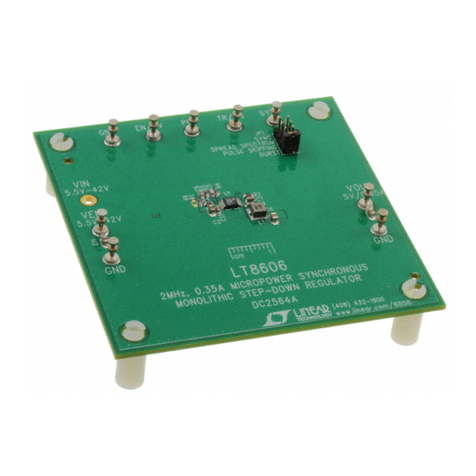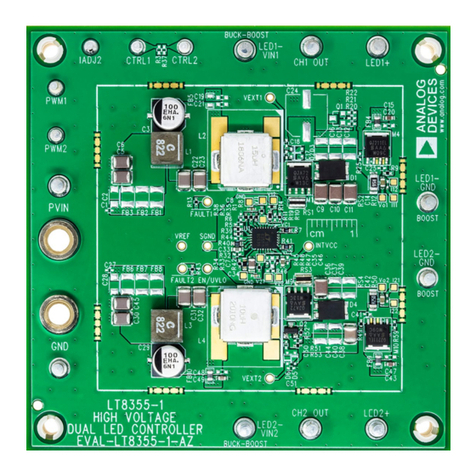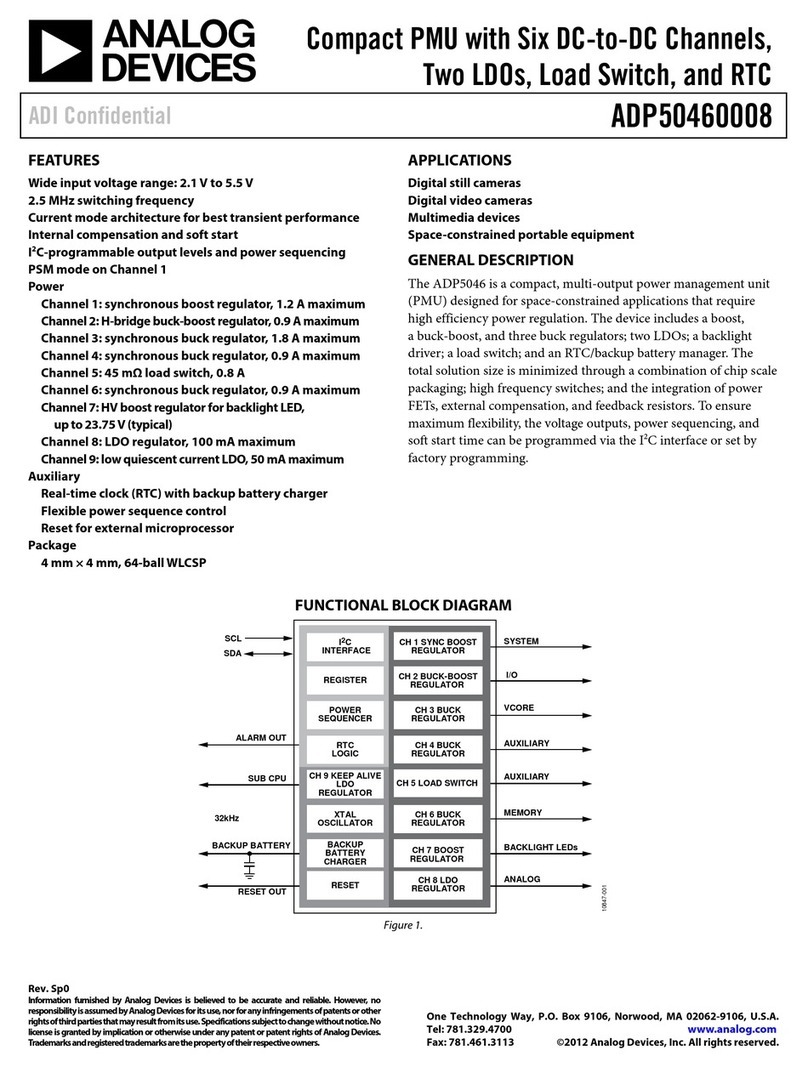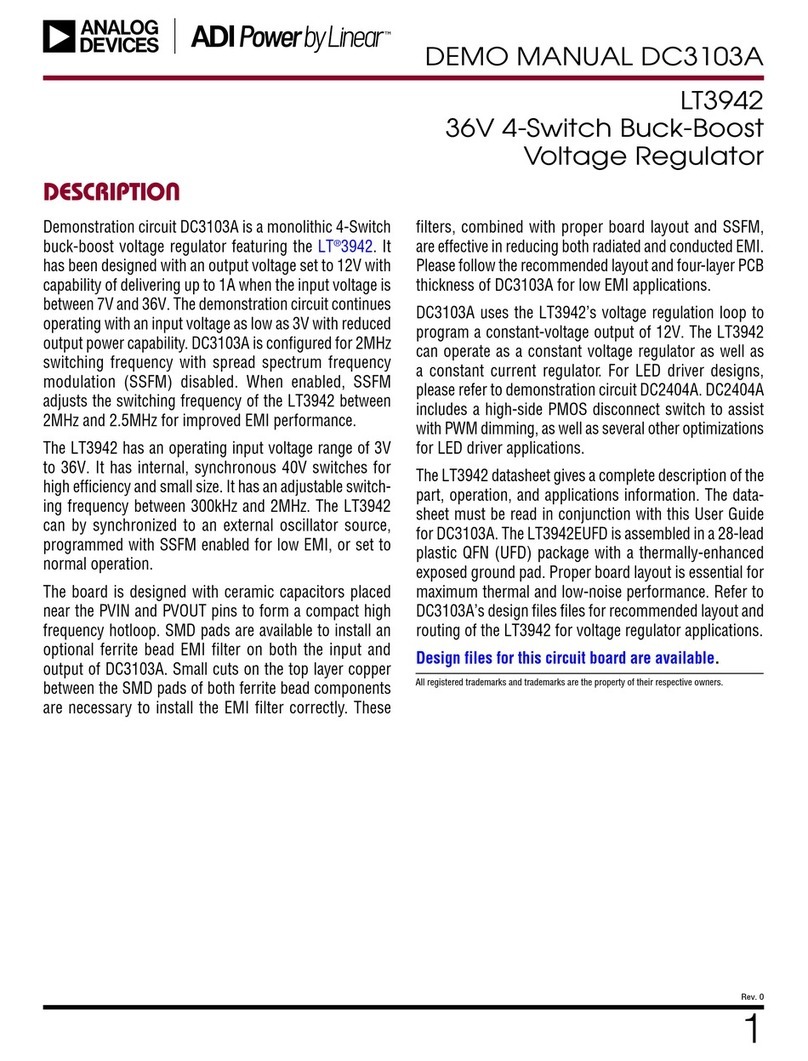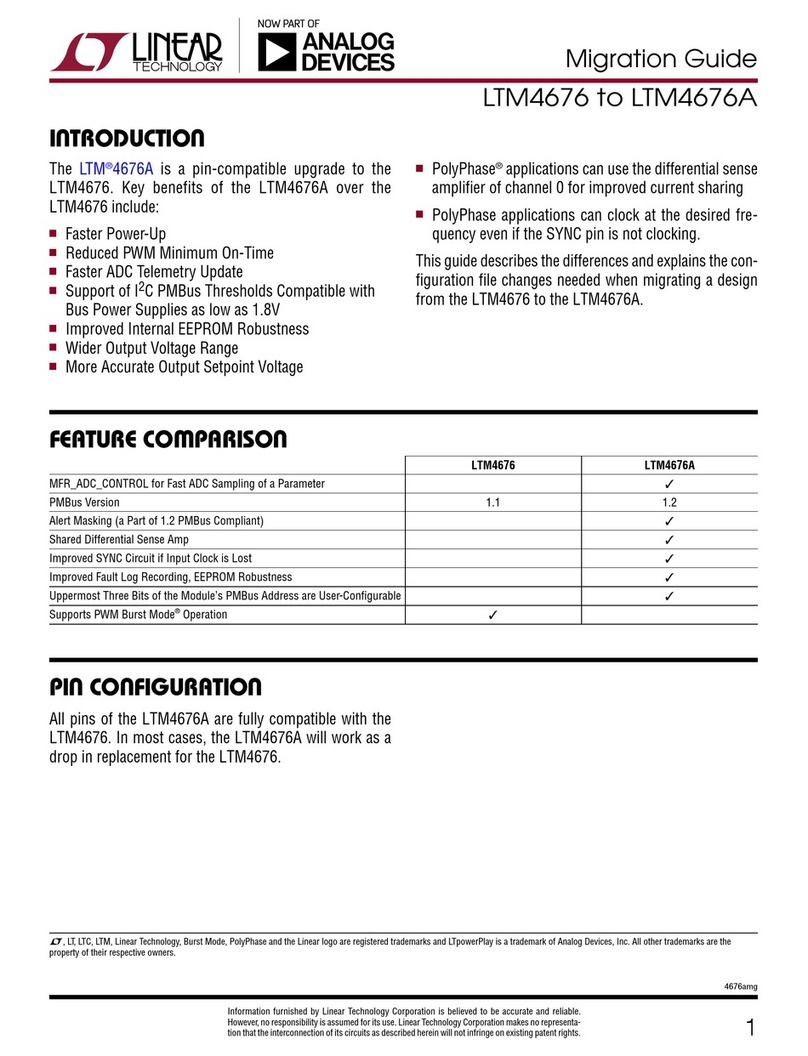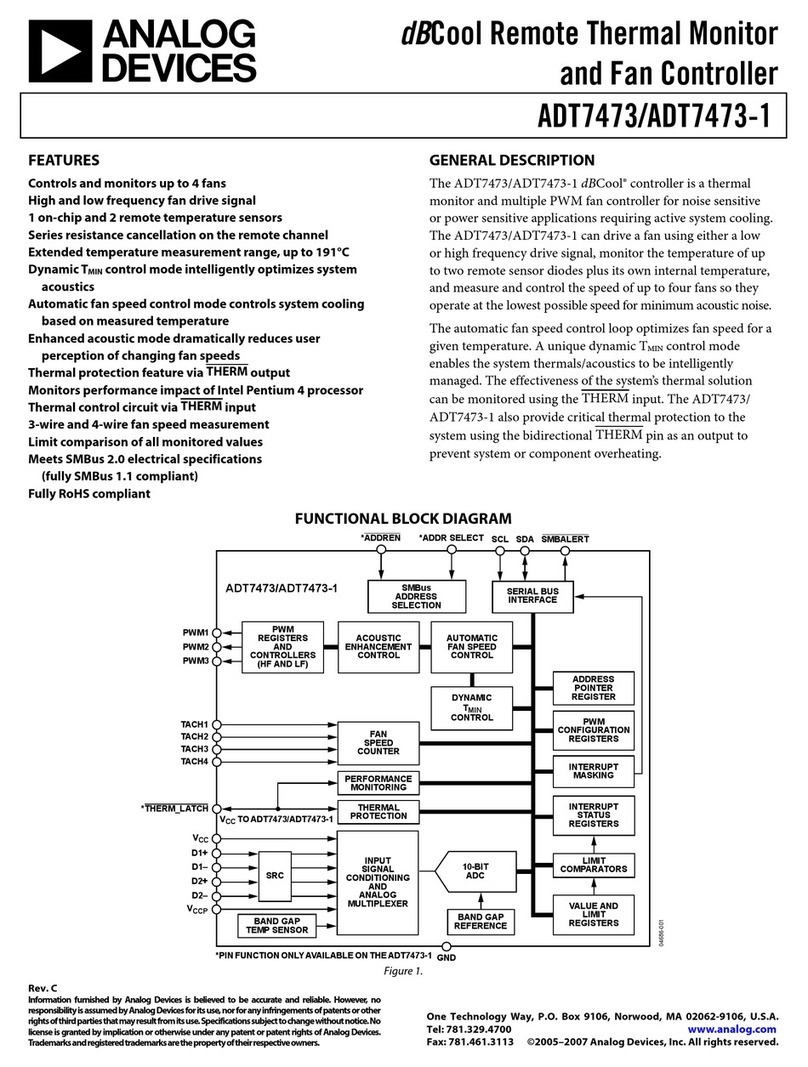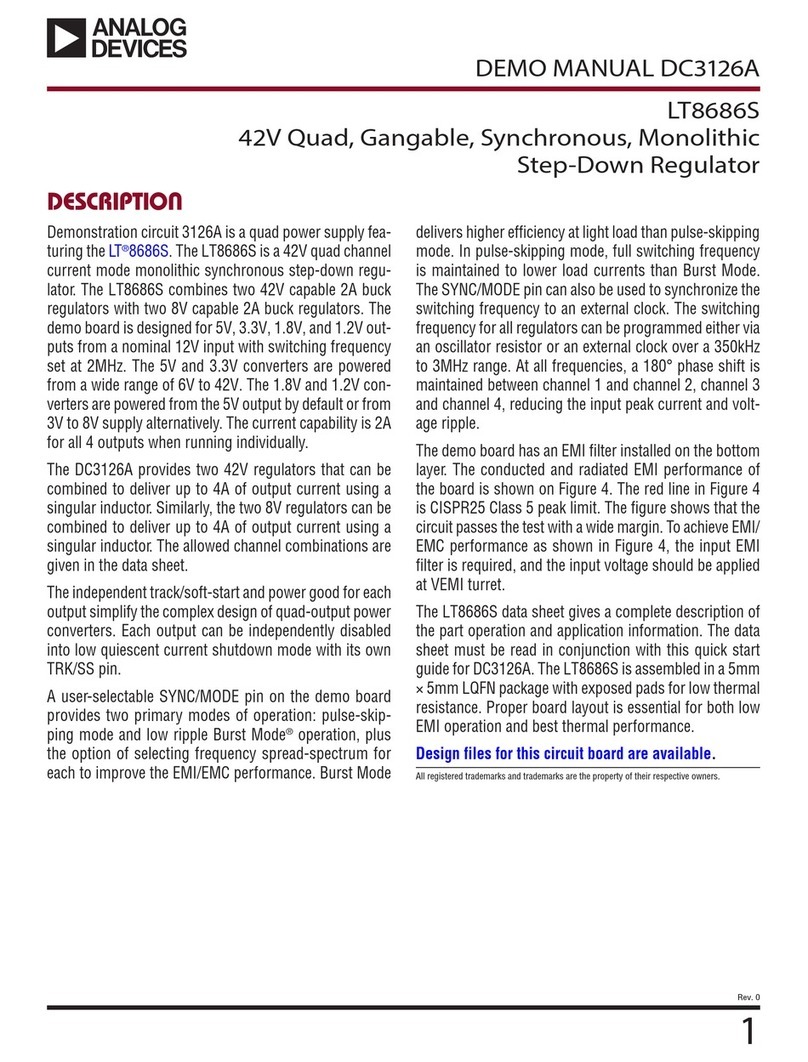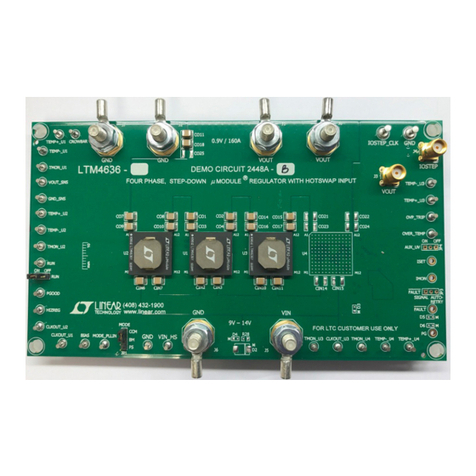
ADT7467
Rev. 0| Page 9 of 80
PRODUCT DESCRIPTION
The ADT7467 is a complete thermal monitor and multiple fan
controller for any system requiring thermal monitoring and
cooling. The device communicates with the system via a serial
system management bus. The serial bus controller has a serial
data line for reading and writing addresses and data (Pin 16),
and an input line for the serial clock (Pin 1). All control and
programming functions for the ADT7467 are performed over
the serial bus. In addition, a pin can be reconfigured as an
SMBALERT output to signal out-of-limit conditions.
COMPARISON BETWEEN ADT7460 AND ADT7467
The ADT7467 is an upgrade to the ADT7460. The ADT7467
and ADT7460 are almost pin and register map compatible. The
ADT7467 and ADT7460 have the following differences:
1. On the ADT7467, the PWM drive signals can be config-
ured as either high frequency or low frequency drives. The
low frequency option is programmable between 10 Hz and
100 Hz. The high frequency option is 22.5 kHz. On the
ADT7460, only the low frequency option is available.
2. Once VCC is powered up, monitoring of temperature and
fan speeds is enabled on the ADT7467 when VCCP is
powered up, or if VCCP is never powered up, when the first
SMBus transaction with the ADT7467 is completed. On the
ADT7460, the STRT bit in Configuration Register 1 must
be set to enable monitoring.
3. The fans are switched off by default on power-up on the
ADT7467. On the ADT7460, the fans run at full speed on
power-up.
Fail-safe cooling is provided on the ADT7467 in that, if the
measured temperature exceeds the THERM limit (100°C),
the fans run at full speed.
Fail-safe cooling is also provided 4.6 s after VCCP is powered
up. The fans go to full speed, if the ADT7467 has not been
addressed via the SMBus within 4.6 s of when the VCCP is
powered up. This protects the system in the event that the
SMBus fails. The ADT7467 can be programmed at any
time, either before or after the 4.6 s has elapsed, and it
behaves as programmed. If VCCP is never powered up, fail-
safe cooling is effectively disabled. If VCCP is disabled,
writing to the ADT7467 at any time causes the ADT7467 to
operate normally.
4. Series resistance cancellation (SRC) is provided on the
remote temperature channels on the ADT7467, but not on
the ADT7460. SRC automatically cancels linear offset
introduced by a series resistance between the thermal
diode and the sensor.
5. The ADT7467 has an extended temperature measurement
range. The measurement range goes from–64°C to +191°C.
On the ADT7460, the measurement range is from −127°C
to +127°C. This means that the ADT7467 can measure
higher temperatures. The ADT7467 also includes the
ADT7460 temperature range; the temperature measure-
ment range can be switched by setting Bit 0 of
Configuration Register 5.
6. The ADT7467 maximum fan speed (% duty cycle) in the
automatic fan speed control loop can be programmed. The
maximum fan speed is 100% duty cycle on the ADT7460
and is not programmable.
7. The offset register in the ADT7467 is programmable up to
±64°C with 0.50°C resolution. The offset register of the
ADT7460 is programmable up to ±32°C with 0.25°C
resolution.
8. VCCP is monitored on Pin 14 of the ADT7467 and can be
used to set the threshold for THERM (PROCHOT) (2/3 of
VCCP). 2.5 V is monitored on Pin 14 of the ADT7460. The
threshold for THERM (PROCHOT) is set at VIH = 1.7 V
and VIL = 0.8 V on the ADT7460.
9. On the ADT7460, Pin 14 could be reconfigured as SMBus
ALERT. This is not available on the ADT7467. SMBus
ALERT can be enabled instead on Pin 9.
10. A GPIO can also be made available on Pin 9 on the
ADT7467. This is not available on the ADT7460. Set the
GPIO polarity and direction in Configuration Register 5.
The GPIO status bit is Bit 5 of Status Register 2 (shared
with TACH4 and THERM, because only one can be
enabled at a time).
11. The ADT7460 has three possible SMBus addresses, which
are selectable using the address select and address enable
pins. The ADT7467 has one SMBus address available at
Address 0x2E.
Due to the inclusion of extra functionality, the register map has
changed, including an additional configuration register:
Configuration Register 5 at Address 0x7C.
